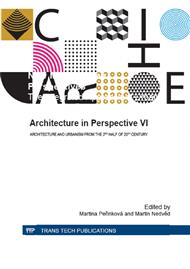p.132
p.137
p.141
p.147
p.153
p.158
p.164
p.171
p.176
From Functional Areas towards Metropolitan Structure: Public Space in Sustainable Development Context
Abstract:
If sustainable life on Earth is the goal (today), the Mankind cannot head towards it living in cities that are not sustainable. Localities that have lost the ability, unduly frequent in our cities, call the nature and causes of the phenomenon to be revisited. Once perceived in a city context, brownfields appear as places where the city failed: the communication, both material and social-cultural values´ exchange – that is the fundamental principle of a city - reduced and finally stopped between the locality, its surroundings and the polis. Identified as a platform for the communication, public space creates the basic framework of a city – the metropolitan structure. Vital public space claims to be the base of sustainable development of a city thus: the paper verifies the hypothesis and provides essential description of functions and types of public space. Principles and methods of its formation are demonstrated on examples in a nutshell. Eventually, the paper contributes both to the positive and to the normative theory of urban public space. Richly documented both in literature and the author's own work, commonly accessible reality of the built environment is the platform of explorative research plan of the paper. New, revising conclusions do not result from new findings on the situation, but from new perspectives on familiar issues. The same platform allows easy verification of hypotheses and new explanations.
Info:
Periodical:
Pages:
176-180
Citation:
Online since:
November 2014
Authors:
Permissions:
Share:
Citation:


